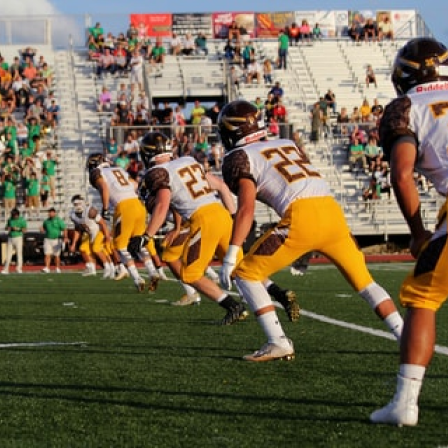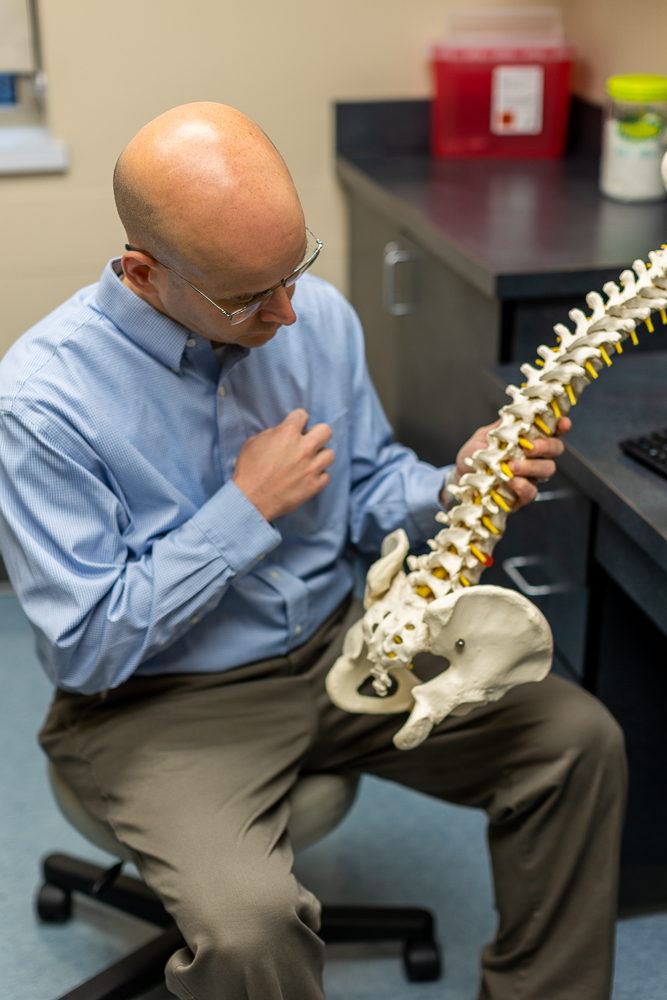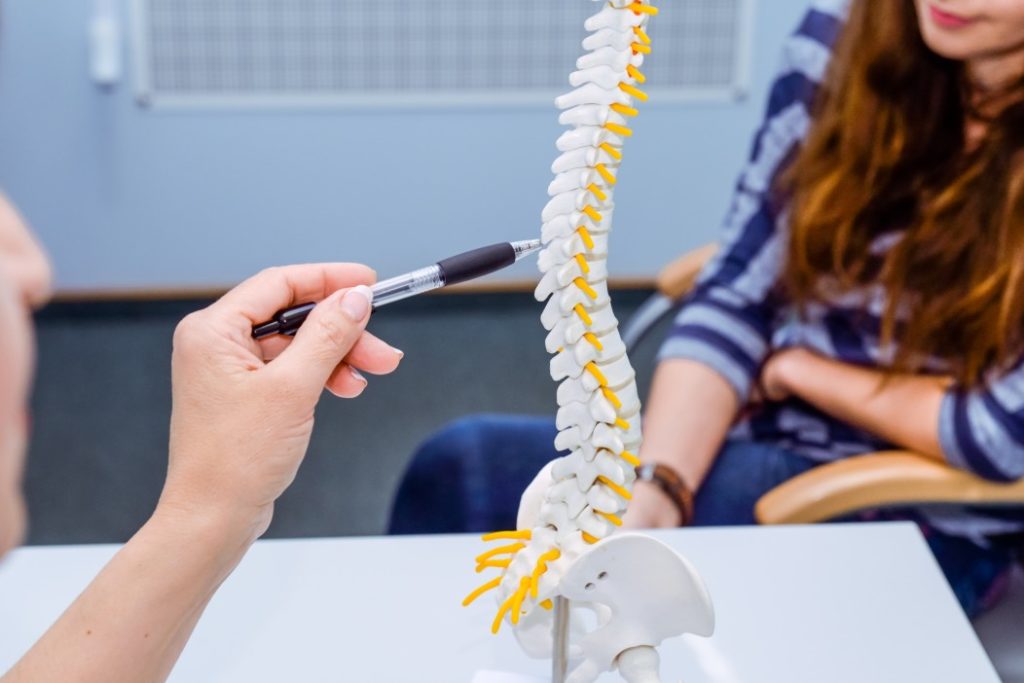
In a lot of instances, sports medicine focuses on injury prevention and mitigation to keep an athlete healthy. However, sports medicine physicians in the orthopedic field can help with a variety of situations when injuries strike.
Dr. McCabe is one of our sports medicine physicians at Kansas City Orthopedic Alliance. He focuses on the diagnosis and treatment of significant injuries to get players back on the field. Whether through conservative measures or surgery, Dr. McCabe always puts his patients at the forefront, ensuring they get the best treatment option for their needs.
To learn more about what sports medicine is and the aspects involved in the practice, read on for our in-depth guide to sports medicine from our Kansas City experts.
What is orthopedic sports medicine?
Orthopedic sports medicine is a practice that encompasses the prevention, diagnosis, and treatment of sports-related injuries, including surgery and non-surgical treatments. The biggest benefit of visiting a sports medicine physician in Kansas City is a proper diagnosis and accurate treatment plan.
There are times when you may face recurring pain but may not understand where it’s coming from and may risk worsening the injury. However, with the help of a physician, you can learn more about why you’re having pain in order to treat it more effectively.
Many athletes work with trainers or other health care providers. A sports medicine physician helps fill in those gaps where advanced diagnosis and treatment options may be needed. For example, imaging may be needed to determine whether you have a stress fracture or you’re simply suffering from joint and muscle overuse. A physician can utilize tools such as X-rays and MRI scans to gain insight into your injury.
Keep in mind that there is a difference between a sports medicine physician and an orthopedic sports medicine surgeon. A sports medicine physician tends to focus solely on diagnosing and treating conditions using non-invasive methods; however, an orthopedic sports medicine surgeon goes beyond conservative treatment options and can also perform surgeries such as arthroscopy. Both can recommend you to physical therapists who will help you further heal throughout the process.
At the end of the day, the goal of orthopedic sports medicine is to help athletes and people who live a more active lifestyle get back to doing what they love. This requires careful consideration of the patient’s needs, pain levels, and requirements to return to optimal health. Depending on the injury, the healing process could take weeks to months, but it’s best not to rush through it. Rushing can lead to more injuries down the road, which could impact your ability to play in the future.
Common sports injuries: Shoulder
Labral tears are a common shoulder injury in young patients. There are three main types of shoulder labrum tears:
- Bankart tears: Bankart tears run along the lower portion of the shoulder socket. This type of labrum tear often results from an acute injury such as a dislocation or some sort of shoulder instability.
- Posterior labrum tears: These occur in the back of the shoulder and are often found in weight lifters or others who have pain with lifting and pushing. These often occur without the patient being aware of any specific injury or trauma.
- Superior labrum, anterior to posterior (SLAP) tears: SLAP tears involve the top portion of the labrum. This is a common overuse injury in athletes whose sport requires a lot of overhead throwing (i.e. tennis or baseball) or arm rotation (i.e. swimming and volleyball).
Older patients tend to come to Dr. McCabe for rotator cuff repairs (however, rotator cuff injuries can happen to all ages) to fix painful rotator cuff tears. In a rotator cuff tear, the tendons are no longer fully attached to the humerus (upper arm bone) and can either be a partial tear (tendons aren’t completely detached) or a complete tear. Tears can stem from acute injuries, but for older patients, they are usually degenerative. That means wear and tear occurs over time.
Sports medicine treatment options for shoulder injuries include physical therapy, injections, and rest. If those methods don’t work, a physician may decide a shoulder arthroscopy is the best next option.
Common sports injuries: Hip
No matter the severity, hip pain can be a major cause for concern for athletes. When pain affects simple tasks such as walking and sitting, consulting with a sports medicine specialist can help diagnose that pain and treat it.
Hip impingement is one of the most common hip conditions among athletes. Hip impingement results from abnormal contact of the femoral head against the acetabular socket. Most people have a nice slope along the head and neck of the femur (ball portion of the ball and socket joint), allowing the femur to fit nicely into the socket.
However, not everybody and their bones develop the ideal way. There are instances where extra bony growths can form, which can affect how the femur articulates (connects) and moves within the hip socket. These bony growths can appear as bumps, and there are two main places these bones can appear.
- Cam impingement: Excess bone growth appears around the head or neck of your femur. This is the most common type of hip impingement.
- Pincer impingement: Excess bone growth appears on the hip socket or the socket sits at an abnormal angle.
Hip impingement pain can happen any time between the teenage years to middle age and beyond. This is mainly because adolescent development may cause the bumpy growths on the femur or the hip socket. Children who haven’t reached this stage do not typically have to worry about hip impingement.
Treatment options for hip injuries and pain include physical therapy, injections, and rest. If those methods don’t work, a physician may decide a hip arthroscopy is the best next option.
Common sports injuries: Knee
At Kansas City Orthopedic Alliance, Dr. McCabe mostly focuses on knee injuries in younger, active patients.
It’s common for athletes to end up with an ACL tear, especially in high-intensity sports such as football, basketball, and soccer. An ACL tear is a sprain in one the major ligaments in your knee. Oftentimes, patients will notice a popping sound at the time of the injury followed by swelling, pain, or even the feeling of your knee “giving out.”
ACL tears have multiple causes such as:
- Sudden change in movement
- Pivoting on a planted foot
- Landing awkwardly from a jump
- Getting hit in the knee (common in football)
- Stopping abruptly
Just with any injury, an ACL tear can range in severity. So while some may be able to recover with bracing and physical therapy, others may require surgery to repair the injury. The only way to understand the severity of an injury is by a thorough examination provided by your sports medicine physician.
Orthopedic sports medicine and arthroscopy
An arthroscopy is a scope-based surgery that can be used for the hip, knee, shoulder, and even elbow. Unlike open surgery, arthroscopy procedures don’t require large incisions, which can make healing, recovery, and pain management easier. With an arthroscopy, Dr. McCabe can treat and repair a variety of sports-related conditions.
We understand that surgery may be a scary choice, but a vast majority of patients who undergo an arthroscopy can recover at 100%. To maximize your chances for an optimal outcome, it’s best to try to get as healthy as possible before you proceed with any type of surgery, including orthopedic surgery.
Physical therapy is required after surgery and is crucial for building strength and getting motion back.
Learn more about Dr. McCabe at Kansas City Orthopedic Alliance
Dr. McCabe obtained his fellowship in sports medicine and arthroscopy. He focuses on arthroscopic procedures of the hip, knee, and elbow.
Since hip arthroscopies aren’t a common procedure, Dr. McCabe prides himself on being one of the few physicians in the Kansas City area who performs the procedure for patients of all ages. Through proper technique and the understanding of which patients would benefit the most, Dr. McCabe has completed countless successful arthroscopies throughout the years.
Dr. McCabe also focuses on sports medicine for athletes of all ages. He has a special interest in high school athletes. He is currently the designated sports physician for Belton High School, Ray-Pec High School, and Grandview High School. In addition to high school sports, he also works as a consultant for Sporting KC and KC Ballet.
While most of his patients fall under the sports medicine category, he doesn’t solely focus his attention on athletes. In reality, a large portion of his patients are people who simply live an active lifestyle or have recreational hobbies such as running or fitness.
Learn more about sports medicine at Kansas City Orthopedic Alliance
With the help of the KCOA’s private practice model, Dr. McCabe ensures each patient receives the most value.
The core of his success in the field of sports medicine lies in proper diagnosis. An appointment with Dr. McCabe includes the highest quality technology to pinpoint a patient’s underlying musculoskeletal conditions. From there, he can better understand which sports medicine treatment will work best for you.
For a thorough evaluation with Dr. McCabe, call us at 913-642-0200 or schedule an appointment today.


